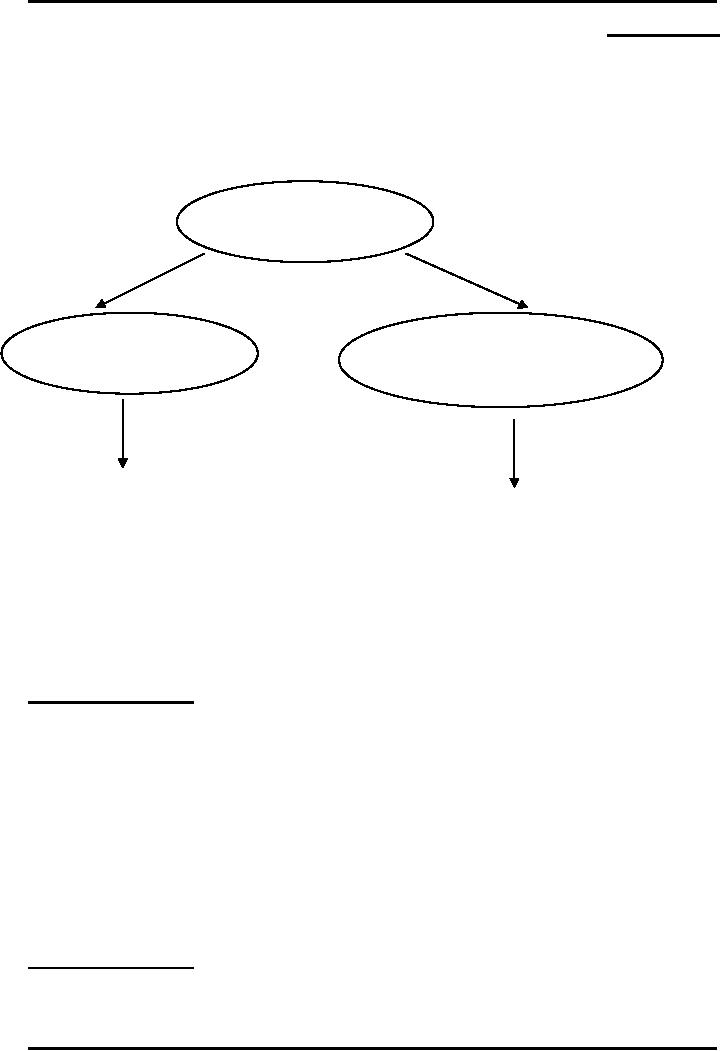 |
ELEMENTS OF FINANCIAL STATEMENTS |
| << IASBíS FRAMEWORK |
| EVENTS AFTER THE BALANCE SHEET DATE >> |

Advance
Financial Accounting
(FIN-611)
VU
LESSON
# 26
ELEMENTS
OF FINANCIAL STATEMENTS
Financial
information of an entity are
classified into five main heads,
these main heads
are
elements of financial
statements.
Elements
of financial statements
Measurement
of financial
Measurement
of financial
position
through balance sheet
performance
through income statement
Assets
Liabilities
Incomes
Equity
Expenses
Assets:
These
are the resources in control
of the entity as a result of
past events and from
which future
economic benefits are
expected to flow to the
entity.
Points
to remember:
1.
Resources in control
2.
Past event
3.
Future inflow
Liabilities:
These
are the present obligations
of the entity arising from
past events, the
settlement
of which is
expected to result in an outflow from the
entity of resources
embodying
economic
benefits.
Points
to remember:
1.
Present obligation
2.
Past event
3.
Future outflow
130

Advance
Financial Accounting
(FIN-611)
VU
Equity:
Equity
represents residual interest in
the assets of the entity
after deducting all
its
liabilities.
Points
to remember:
1.
Equity contributed
2.
Reserves created
Incomes:
Incomes
establish increases in economic
benefits during the accounting
period in the
form of
inflows or enhancements of assets or
decreases of liabilities that result
in
increases
in equity other than those
relating to contributions from equity
participants.
Incomes
include:
1.
Revenue
a. Sales of
goods
b. Sales of
services
c.
Returns on investments
2.
Gains
a.
Disposal of assets at a value higher than
its carrying amount
b.
Discharge of liabilities at a value
lesser than its carrying
amount
Expenses:
Expenses
establish decreases in economic
benefits during the accounting
period in the
form of
outflows or decrease in assets or
incurrence of liabilities that
result in
decreases
in equity, other than those
relating to distributions to equity
participants.
Expenses
include:
1.
Revenue Expenses
a.
Expenses that arise in the
course of ordinary activities of an
entity.
2.
Losses
a.
Disposal of assets at a value lesser than
its carrying amount
b.
Discharge of liabilities at a value
higher than its carrying
amount
Measurement
of the Elements of Financial
Statements
A
number of different measurement
bases are employed to
different degrees and
combinations
in
financial statements. These
include:
131

Advance
Financial Accounting
(FIN-611)
VU
1.
Historical Cost
Assets
are recorded at the amount of
cash paid to acquire them.
Sometimes the terms
cash
equivalents or fair value at
acquisition will be used
instead.
Liabilities
are recorded at the proceeds
received in exchange for the
obligation on the
date
of transaction.
2.
Current Cost
Assets
are carried at their current
purchase price.
Liabilities
are carried at the
undiscounted amount currently required to
settle them.
3.
Realizable Value
Assets
are carried at the amount,
which could currently be obtained by an
orderly
disposal.
Liabilities
are carried at their
settlement values, the amount to be
paid to satisfy them
in
the normal course of
business.
4.
Present Value
Assets
are carried at the present
discounted value of the future
net cash inflows
that
the
item is expected to generate in
the normal course of
business.
The
most common measurement
basis adopted by the entity
in preparing financial
statements
is historical cost. This is usually
combined with other bases.
132
Table of Contents:
- ACCOUNTING FOR INCOMPLETE RECORDS
- PRACTICING ACCOUNTING FOR INCOMPLETE RECORDS
- CONVERSION OF SINGLE ENTRY IN DOUBLE ENTRY ACCOUNTING SYSTEM
- SINGLE ENTRY CALCULATION OF MISSING INFORMATION
- SINGLE ENTRY CALCULATION OF MARKUP AND MARGIN
- ACCOUNTING SYSTEM IN NON-PROFIT ORGANIZATIONS
- NON-PROFIT ORGANIZATIONS
- PREPARATION OF FINANCIAL STATEMENTS OF NON-PROFIT ORGANIZATIONS FROM INCOMPLETE RECORDS
- DEPARTMENTAL ACCOUNTS 1
- DEPARTMENTAL ACCOUNTS 2
- BRANCH ACCOUNTING SYSTEMS
- BRANCH ACCOUNTING
- BRANCH ACCOUNTING - STOCK AND DEBTOR SYSTEM
- STOCK AND DEBTORS SYSTEM
- INDEPENDENT BRANCH
- BRANCH ACCOUNTING 1
- BRANCH ACCOUNTING 2
- ESSENTIALS OF PARTNERSHIP
- Partnership Accounts Changes in partnership firm
- COMPANY ACCOUNTS 1
- COMPANY ACCOUNTS 2
- Problems Solving
- COMPANY ACCOUNTS
- RETURNS ON FINANCIAL SOURCES
- IASBíS FRAMEWORK
- ELEMENTS OF FINANCIAL STATEMENTS
- EVENTS AFTER THE BALANCE SHEET DATE
- PROVISIONS, CONTINGENT LIABILITIES AND CONTINGENT ASSETS
- ACCOUNTING POLICIES, CHANGES IN ACCOUNTING ESTIMATES AND ERRORS 1
- ACCOUNTING POLICIES, CHANGES IN ACCOUNTING ESTIMATES AND ERRORS 2
- BORROWING COST
- EXCESS OF THE CARRYING AMOUNT OF THE QUALIFYING ASSET OVER RECOVERABLE AMOUNT
- EARNINGS PER SHARE
- Earnings per Share
- DILUTED EARNINGS PER SHARE
- GROUP ACCOUNTS
- Pre-acquisition Reserves
- GROUP ACCOUNTS: Minority Interest
- GROUP ACCOUNTS: Inter Company Trading (P to S)
- GROUP ACCOUNTS: Fair Value Adjustments
- GROUP ACCOUNTS: Pre-acquistion Profits, Dividends
- GROUP ACCOUNTS: Profit & Loss
- GROUP ACCOUNTS: Minority Interest, Inter Co.
- GROUP ACCOUNTS: Inter Co. Trading (when there is unrealized profit)
- Comprehensive Workings in Group Accounts Consolidated Balance Sheet